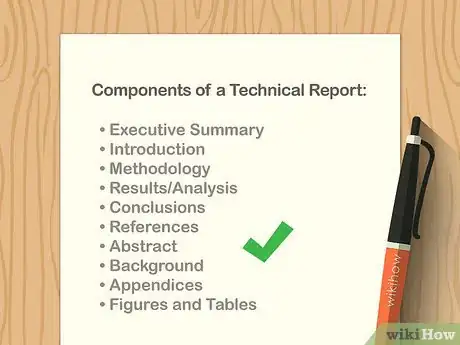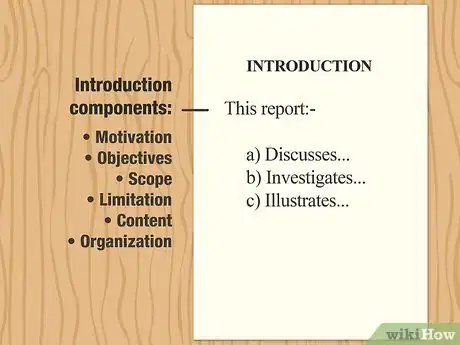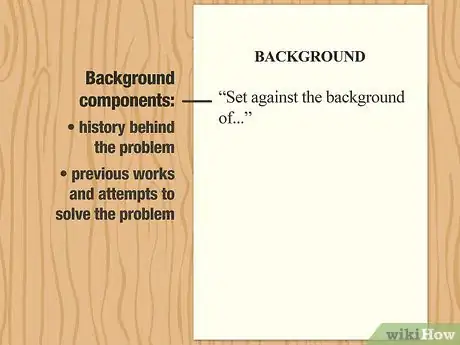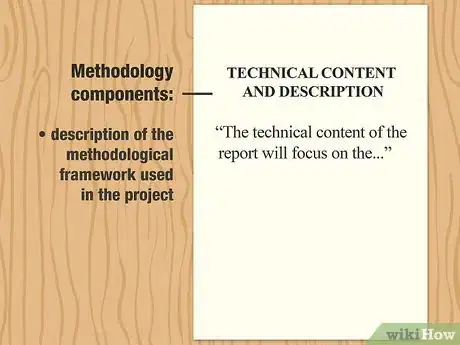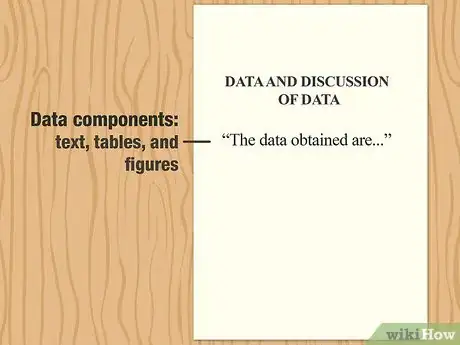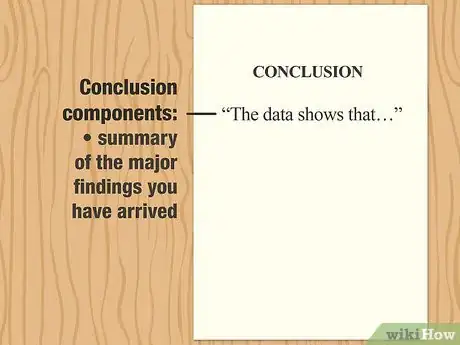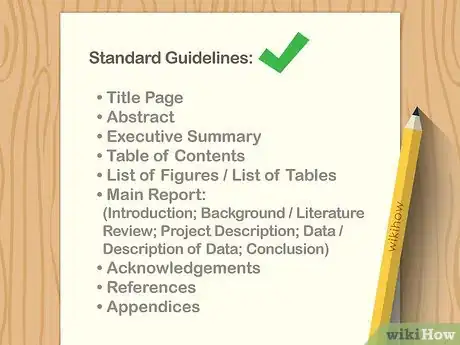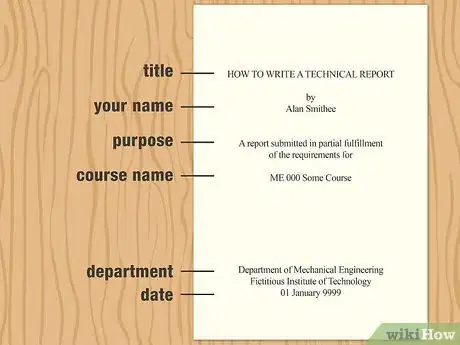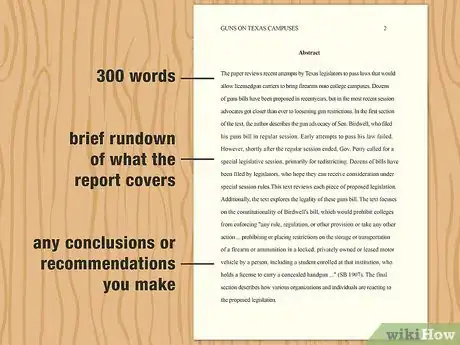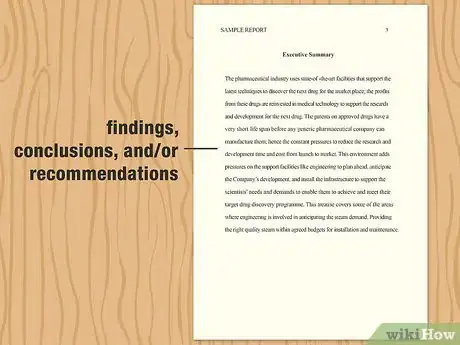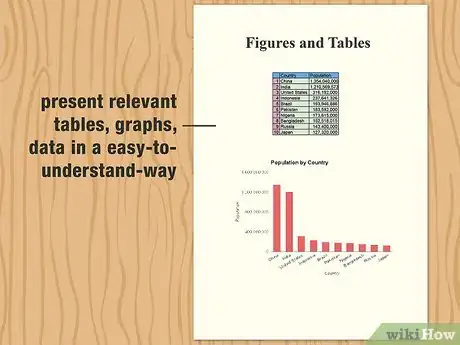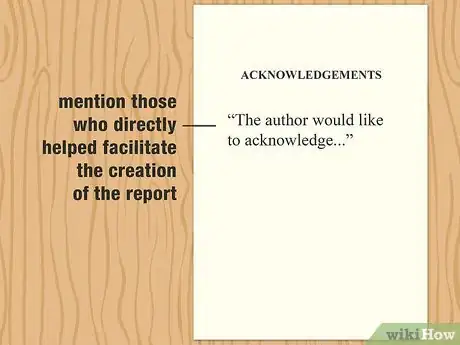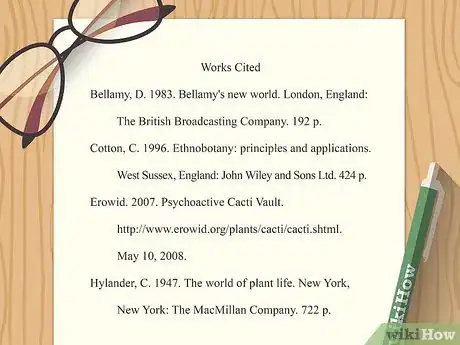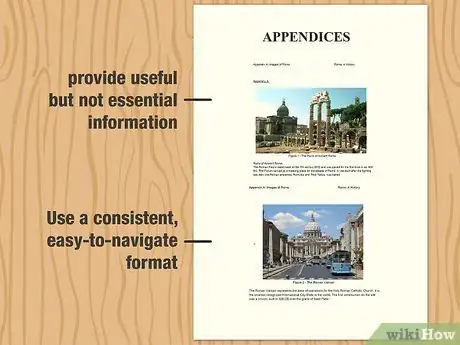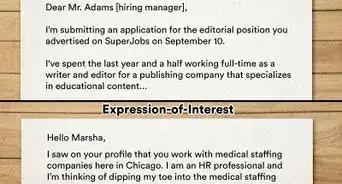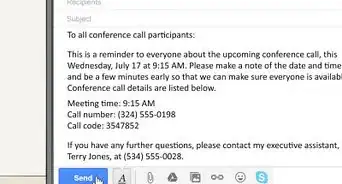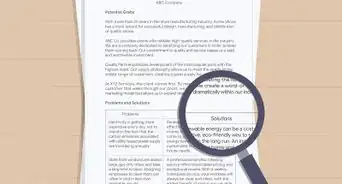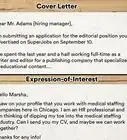This article was co-authored by wikiHow staff writer, Christopher M. Osborne, PhD. Christopher Osborne has been a wikiHow Content Creator since 2015. He is also a historian who holds a PhD from The University of Notre Dame and has taught at universities in and around Pittsburgh, PA. His scholarly publications and presentations focus on his research interests in early American history, but Chris also enjoys the challenges and rewards of writing wikiHow articles on a wide range of subjects.
There are 7 references cited in this article, which can be found at the bottom of the page.
This article has been viewed 62,845 times.
Learn more...
Engineers, scientists, and medical professionals need to be good writers too—and technical reports prove it! A good technical report presents data and analysis on a specified topic in a clear, highly-organized, and effective manner. Before you begin writing, define your message and audience, and make an outline. Then, write the main body of the report and surround it with the other necessary sections, according to your chosen layout.
Steps
Planning Your Report
-
1Establish the message you want to convey through the report. You’ve done your research and collected your data, so now it’s time to ask yourself what it all means. How will you define the problem or topic you are addressing, and what conclusions can you draw based on the data and evidence?[1]
- For instance, you may want to convey the message that a new technique for extracting a particular chemical compound is both safer and more cost-effective.
- The best technical reports remain clear and focused throughout—they have a specific purpose and convey the information in a logical order.
- Work with advisors, supervisors, or colleagues to fine-tune the message and/or goal of your report. These can vary widely depending on whether the report is being produced for academic, business, or other purposes.
-
2Define your audience before you begin writing. Who will be reading your report—fellow researchers, corporate executives, the general public, or someone else? It’s imperative that your report is written in such a way that its data and findings can be easily understood by its intended audience.
- If others in your field will be reading the report, it can be more “technical” in language and detail. In many cases, though, technical reports are intended for those outside of your particular discipline. If so, cut back on the jargon for non-expert readers.
- Consider having a non-expert friend look over your report throughout the process to give you feedback on its accessibility to a broad audience.
Advertisement -
3Create an outline to follow while you write. Technical reports are usually very structured, often with clearly-labeled and numbered sections. Therefore, it’s fairly straightforward to draw up an outline that identifies each major element of the report.[2]
- Determine which particular sections your report must or may have. Consult the person or organization to whom you’ll be submitting the report for any layout requirements.
Writing the Main Body of the Report
-
1Create a thorough but focused introduction to the report. The introduction to a technical report lays out the main problem or issue your paper addresses, and how you go about addressing it in the report. It should indicate to the reader why the issue at hand is important, and clearly establish the objectives for your report.[3]
- In most cases, the introduction will likely be 1-3 paragraphs in length.
- The end of the introduction should clearly state what the report “does.” It might do so by way of a direct statement (“This report analyzes…”), or by providing a series of questions (which may in some cases be bulleted or numbered) to be addressed.
-
2Provide background information and/or a literature review in the next section. Right after the intro, delve into the basic circumstances surrounding the topic at hand—a quick history of the problem and its relevance today, for instance. If it has been a topic of sustained debate within your field, you might also walk readers through important examples of past work on the subject.[4]
- Essentially, you want readers who may be new to the subject matter to feel like they have at least a rudimentary grasp of it after reading this section.
-
3Follow up with a clear and detailed project description. In this section, you basically tell your reader what it is you actually did to tackle the problem or issue at hand. Tell them what type of testing or analysis you did, using what methods and equipment, and any other relevant details.
- If, for instance, your report is focused on a particular experiment, be specific on the way it was conceived, set up, and conducted.
- This is sometimes called a “methods” section, since you are describing the methods used to conduct your research.
-
4Present your data and describe what it all means in the next sections. You’ve now reached the heart of a technical report, in which you clearly lay out and contextualize the data you’ve gathered. In most cases, you’ll need to provide numerous figures and tables to present the actual data. Don’t rely exclusively on them, though—use text to put the findings into a context that is appropriate for your intended audience.[5]
- It can be hard to determine how much data to present. Giving too little can significantly weaken your analysis and the overall report. Giving too much, however, can drown the reader in a sea of tables and figures. Make sure you provide all essential data, and err on the side of providing a bit too much unless otherwise instructed.
- Present your data in a logical order, so that each table or figure leads into the next one.
-
5Round out the report with a conclusion that bookends your introduction. In a technical report, your introduction should raise the “big” questions and your conclusion should provide your answers. If, for instance, you listed several specific questions in your intro, answer them specifically in the conclusion. Otherwise, use it to pull together your findings into a clear, convincing statement.[6]
- Be as bold in your conclusions as your data and analysis permits you to be. Don’t use terms like “might,” “perhaps,” “could,” and so forth—write something like, “The data shows that…” However, don’t draw conclusions that aren’t supported by your data.
Adding Components in the Proper Layout
-
1Check for specific guidelines with your university, employer, etc. While there is a fair amount of standardization when it comes to organizing technical reports, the particular layout can vary somewhat by discipline or other factors. The following layout, for instance, is a fairly standard one that might be used in your particular case:[7]
- Title Page
- Abstract
- Executive Summary
- Table of Contents
- List of Figures / List of Tables
- Main Report: Introduction; Background / Literature Review; Project Description; Data / Description of Data; Conclusion
- Acknowledgements
- References
- Appendices
-
2Create a simple title page at the beginning of your report. The title page obviously needs to provide the title of the report and your name, and often includes details like the date and the purpose for the report's submission. Check for any title page layout guidelines for your discipline, department, employer, etc.[8]
- For a typical title page (and overall report layout), see https://my.mech.utah.edu/~rusmeeha/references/Writing.pdf
-
3Provide a condensed overview of the report in the abstract. The goal of a technical report abstract is to boil down the essentials of the report into about 300 words. You need to provide a very quick rundown of what the report covers and any conclusions or recommendations you make in it.[9]
- Write the abstract after you’ve written the actual report. You want it to be a condensed description of what you have written, not of what you intend to write.
- Check to see if there is a specific word limit for your abstract. Even if there isn’t, 300 words is a good word limit to aim for.
-
4Create an executive summary that condenses the report by about 90%. Executive summaries get their name due to the fact that they’re targeted toward high-ranking executives who presumably won’t have time to read the whole report. The executive report should be longer and more detailed than the abstract, but still be only about 10% of the length of the main report.[10]
- The executive summary should focus on your findings, conclusions, and/or recommendations, and allow the report itself to present the data—although highlights of the data should be provided.
- Depending on your situation, you may need to write an abstract, an executive summary, or both.
-
5Draw up a table of contents, list of tables, and list of figures. The table of contents should break down the entire report section-by-section, so readers can quickly get a feel for the entire report and find any particular section. Technical reports are data-driven and invariably have many tables and figures, so provide lists of each that quickly identify them and let readers know where to locate them.[11]
- Check for any formatting guidelines for these sections. If the format is left up to you, keep things simple and straightforward.
-
6Follow the main body of the report with an acknowledgments section. While acknowledgements sections in books or other types of research papers often thank friends and family, in technical reports they typically focus on mentioning those who directly helped facilitate the creation of the report. Basically, any individual or group that supported your work in a professional capacity (including financially, such as through grants) should be acknowledged in this section.
- This section typically runs 1-2 paragraphs, and follows a fairly simple “The author would like to thank…” format.
-
7Include citations in the references section, using a consistent format. Create a citation for every source you quote from or refer to in the main body of the report. If you are not given a specific citation format to follow (for instance, APA or MLA format), choose one and follow it consistently throughout this section and the entire report.[12]
- In some cases, you may also be expected to provide a listing of works you have consulted but not specifically cited in the work. Check with the relevant department, organization, individual, etc., if you’re not sure.[13]
-
8Use appendices to provide useful but not essential information. If, for instance, you have a great deal of raw data that isn’t in itself essential to the report, but which is enlightening nevertheless, include it in one or more appendices. Never put anything you consider essential to the report in an appendix—find a place for it in the main body of the work.[14]
- Use a consistent, easy-to-navigate format when creating appendices. They aren’t meant to be dumping grounds for random snippets of data or information.
References
- ↑ https://students.unimelb.edu.au/academic-skills/explore-our-resources/report-writing/technical-report-writing
- ↑ https://www.sussex.ac.uk/ei/internal/forstudents/engineeringdesign/studyguides/techreportwriting
- ↑ http://homepages.rpi.edu/~holguj2/CIVL2030/How_to_write_search/How_to_write_a_good_technical_report.pdf
- ↑ http://homepages.rpi.edu/~holguj2/CIVL2030/How_to_write_search/How_to_write_a_good_technical_report.pdf
- ↑ https://students.unimelb.edu.au/academic-skills/explore-our-resources/report-writing/technical-report-writing
- ↑ https://www.theiet.org/media/5182/technical-report-writing.pdf
- ↑ https://www.sussex.ac.uk/ei/internal/forstudents/engineeringdesign/studyguides/techreportwriting
- ↑ http://www.sussex.ac.uk/ei/internal/forstudents/engineeringdesign/studyguides/techreportwriting
- ↑ https://www.theiet.org/media/5182/technical-report-writing.pdf
- ↑ https://students.unimelb.edu.au/academic-skills/explore-our-resources/report-writing/executive-summaries
- ↑ https://openoregon.pressbooks.pub/technicalwriting/chapter/10-4-table-of-contents/
- ↑ http://www.sussex.ac.uk/ei/internal/forstudents/engineeringdesign/studyguides/techreportwriting
- ↑ http://homepages.rpi.edu/~holguj2/CIVL2030/How_to_write_search/How_to_write_a_good_technical_report.pdf
- ↑ http://homepages.rpi.edu/~holguj2/CIVL2030/How_to_write_search/How_to_write_a_good_technical_report.pdf
